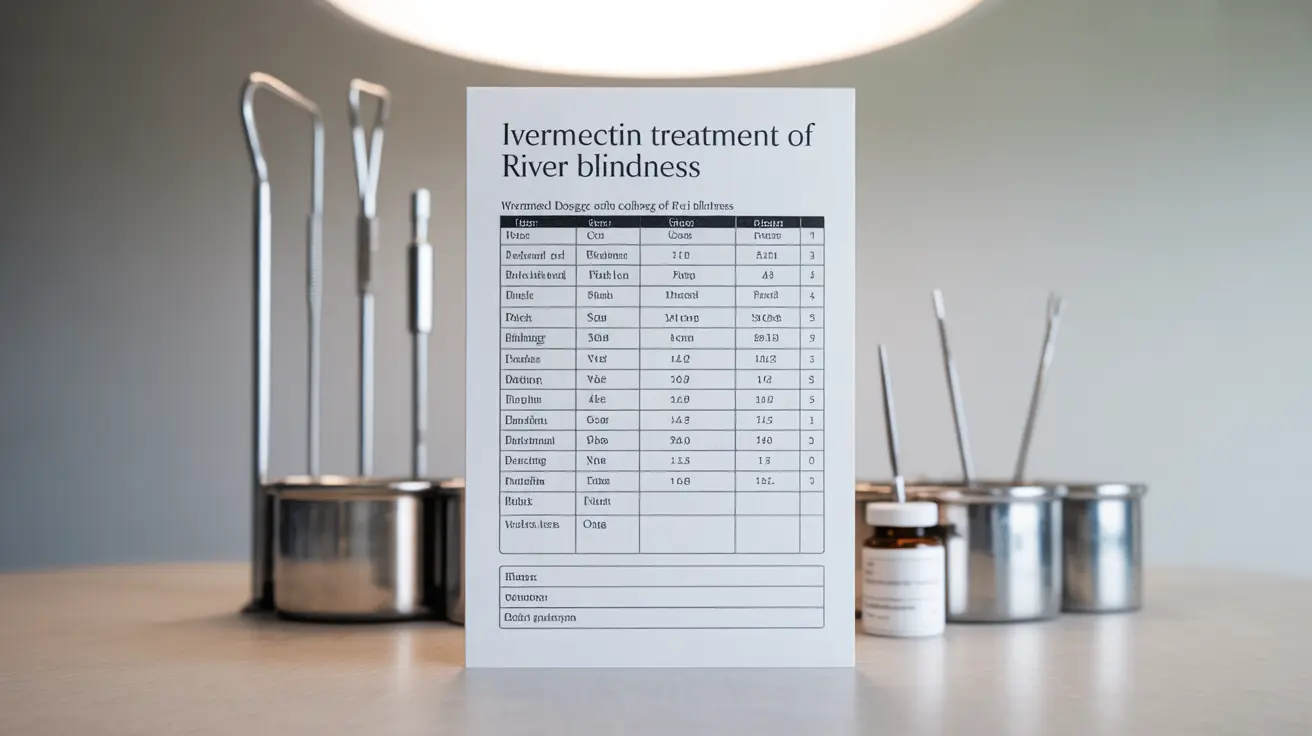Ivermectin has emerged as a crucial medication in the global fight against river blindness (onchocerciasis), a parasitic disease affecting millions worldwide. Understanding the correct dosage and treatment protocol is essential for healthcare providers and patients to ensure safe and effective treatment outcomes.
This comprehensive guide explores the proper use of ivermectin for river blindness, including dosing guidelines, treatment frequency, and important safety considerations that healthcare professionals should know.
Understanding Ivermectin Treatment for River Blindness
Ivermectin works primarily by targeting the microfilariae (larvae) of Onchocerca volvulus, the parasitic worm responsible for river blindness. The medication is administered as part of mass drug administration programs in endemic areas and for individual treatment when diagnosed.
Recommended Dosage Guidelines
The standard ivermectin dosage for river blindness treatment is calculated based on body weight. Healthcare providers typically prescribe 150 micrograms per kilogram (mcg/kg) of body weight as a single oral dose.
Weight-Based Dosing Protocol
For adult patients, the following weight-based guidelines are commonly used:
- 15-24 kg: 3 mg (1 tablet)
- 25-35 kg: 6 mg (2 tablets)
- 36-50 kg: 9 mg (3 tablets)
- 51-65 kg: 12 mg (4 tablets)
- 66-79 kg: 15 mg (5 tablets)
- ≥80 kg: 200 mcg/kg
Treatment Schedule and Duration
Treatment frequency depends on the severity of infection and local transmission rates. In most cases, ivermectin is administered every 6-12 months. In areas with high transmission rates, treatment may be required every 3-6 months until the infection is controlled.
Monitoring and Safety Considerations
Before initiating ivermectin treatment, healthcare providers should conduct thorough patient evaluations. This includes assessing for potential contraindications and considering possible drug interactions.
Common Side Effects
Patients may experience the following side effects, particularly during initial treatment:
- Fever and headache
- Muscle and joint pain
- Itching and skin rash
- Swollen lymph nodes
- Dizziness or fatigue
Diagnostic Procedures
Accurate diagnosis is crucial before beginning ivermectin treatment. Healthcare providers typically employ several diagnostic methods to confirm onchocerciasis:
- Skin snip biopsy
- Slit lamp examination
- Clinical assessment of symptoms
- Serological testing when available
Frequently Asked Questions
What is the recommended ivermectin dosage for treating onchocerciasis in humans? The recommended dosage is 150 micrograms per kilogram (mcg/kg) of body weight, taken as a single oral dose.
How often should ivermectin treatment be repeated for effective control of river blindness? Treatment should typically be repeated every 6-12 months, though some cases may require treatment every 3-6 months in high-transmission areas.
Can ivermectin cure adult worms in onchocerciasis or just the larvae? Ivermectin primarily kills the microfilariae (larvae) but does not eliminate adult worms. It can temporarily sterilize female worms, reducing their ability to produce new microfilariae.
Are there any side effects or risks associated with ivermectin treatment for river blindness? Common side effects include fever, headache, muscle pain, itching, and swollen lymph nodes. These reactions are usually mild and temporary, often occurring as the microfilariae die off.
How is onchocerciasis diagnosed before starting ivermectin treatment? Diagnosis typically involves skin snip biopsies, slit lamp examination of the eyes, clinical assessment of symptoms, and sometimes serological testing when available.




